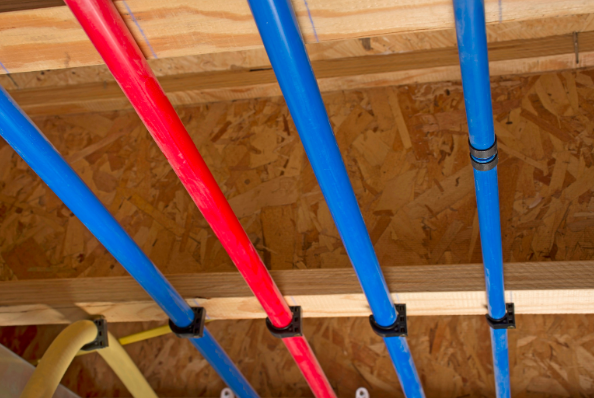Last Updated on November 25, 2022 by mdmtool
PEX and PB can be traced back to the 1960s. Over time both materials have been increasingly adopted in different parts of the world for their unique benefits. PEX and PB piping are both used for home plumbing. They are similar in some ways, but there are also differences between them.
What Is PEX Piping?

PEX piping is a type of plastic tubing that is used for plumbing and other water-supply applications. PEX is made from cross-linked polyethylene, a plastic that is strengthened by chemical bonds between its molecules.
What Is PB Piping?

PB piping is a type of plastic tubing that is used for plumbing and other water-supply applications. PB is made from polybutylene, a plastic made from the polymerization of butylene monomers.
Comparison Between PEX And PB Piping

Tube-Inner Diameter: PEX piping has an inner diameter of about 3/8 inches (9.5 mm) to 1 inch, while PB piping has an inner diameter is approximately 1/2 inch (12.7 mm) to 1-inch.
Length And Diameter: PEX piping is available in heights of up to 500 feet (152.4 meters), while PB piping is only available in lengths of up to 100 feet (30.48 meters).
Strength: PEX has a more substantial structure due to the chemical bonds between its molecules, while PB does not have these bonds.
Temperature: PEX can withstand higher temperatures than PB.
Flexibility: PEX is less flexible than PB.
Resistance: PEX is more resistant to chemicals and UV light than PB.
Recommendation: PEX is not recommended for highly chlorinated water, while PB can be used with chlorinated water.
Installation: PEX is easier to install than PB.
Crimp Rings: PEX piping uses crimp rings to secure fittings, while PB piping uses solvent-welded or push-fit fittings.
Length: PEX tubing comes in more extended sizes than PB tubing.
Operating Pressure: PEX has a higher maximum operating pressure than PB.
Weather Resistance: PEX is more resistant to freezing than PB.
Leakage: PEX is less likely to leak than PB.
Size: PEX is available in a broader range of sizes than PB.
Availability: PEX is more widely used than PB.
Cost: PEX is more expensive than PB.
Applications: PEX can be used for plumbing, radiant heating, snowmelt systems, and agricultural uses. PB can be used for plumbing and industrial services.
Certified: PEX is certified by NSF International, while PB is not.

FAQs
Why Replace Copper?
There are many reasons to replace your home’s copper pipes with PEX or PB piping.
- PEX and PB piping are less likely to leak than copper pipes.
- They are more resistant to thawing.
- PEX is also easier to install than copper piping.
- It is available in a wider range of sizes.
- PEX is less expensive than copper piping.
What Is The Best Pipe For Home Plumbing?
There is no single “best” pipe for home plumbing. The best pipe for your home will depend on various factors, including the type of water supply, the climate in your area, and your budget.
What Are The Drawbacks Of PB Piping?
Polybutylene piping is not as durable as other plumbing pipe types and is susceptible to leaks. In addition, PB piping can be challenging to repair if it becomes damaged.
What Are The Types Of PEX Piping?
There are three types of PEX piping: cross-linked polyethylene
- PEX-A
- PEX-B
- PEX-C
What Is Meant By Colors In PEX Piping?
There are three colors in PEX piping:
- Red: Used for hot water lines
- Blue: Used for cold water lines
- White: Used for neutral or return lines
Conclusion
PEX is a cross-linked polyethylene tubing that is an excellent piping material for many applications. On the other hand, PB piping is made of copper and is used for potable water applications. While PEX and PB piping have their benefits and drawbacks, PEX tubing is generally the better choice for most applications.





